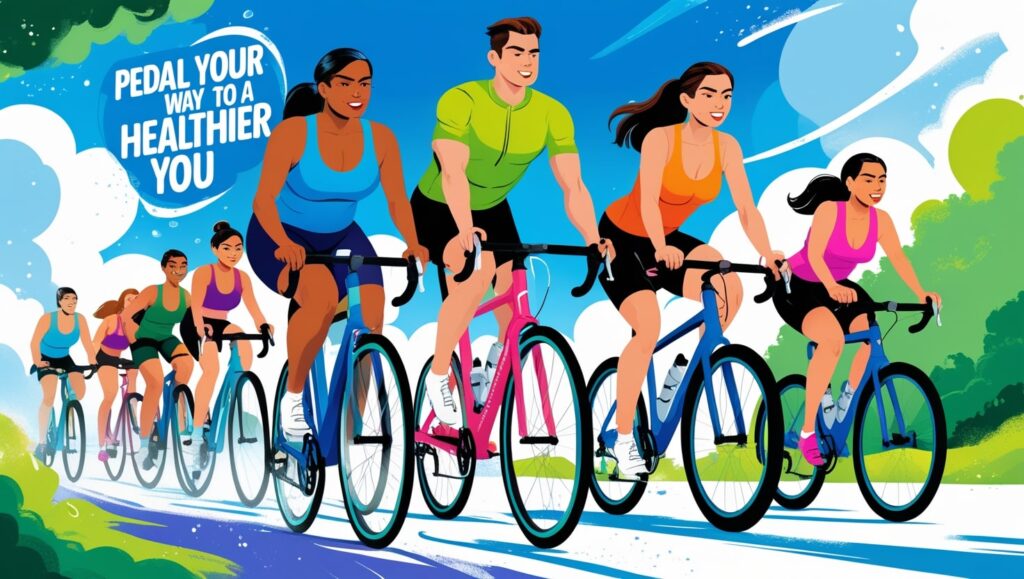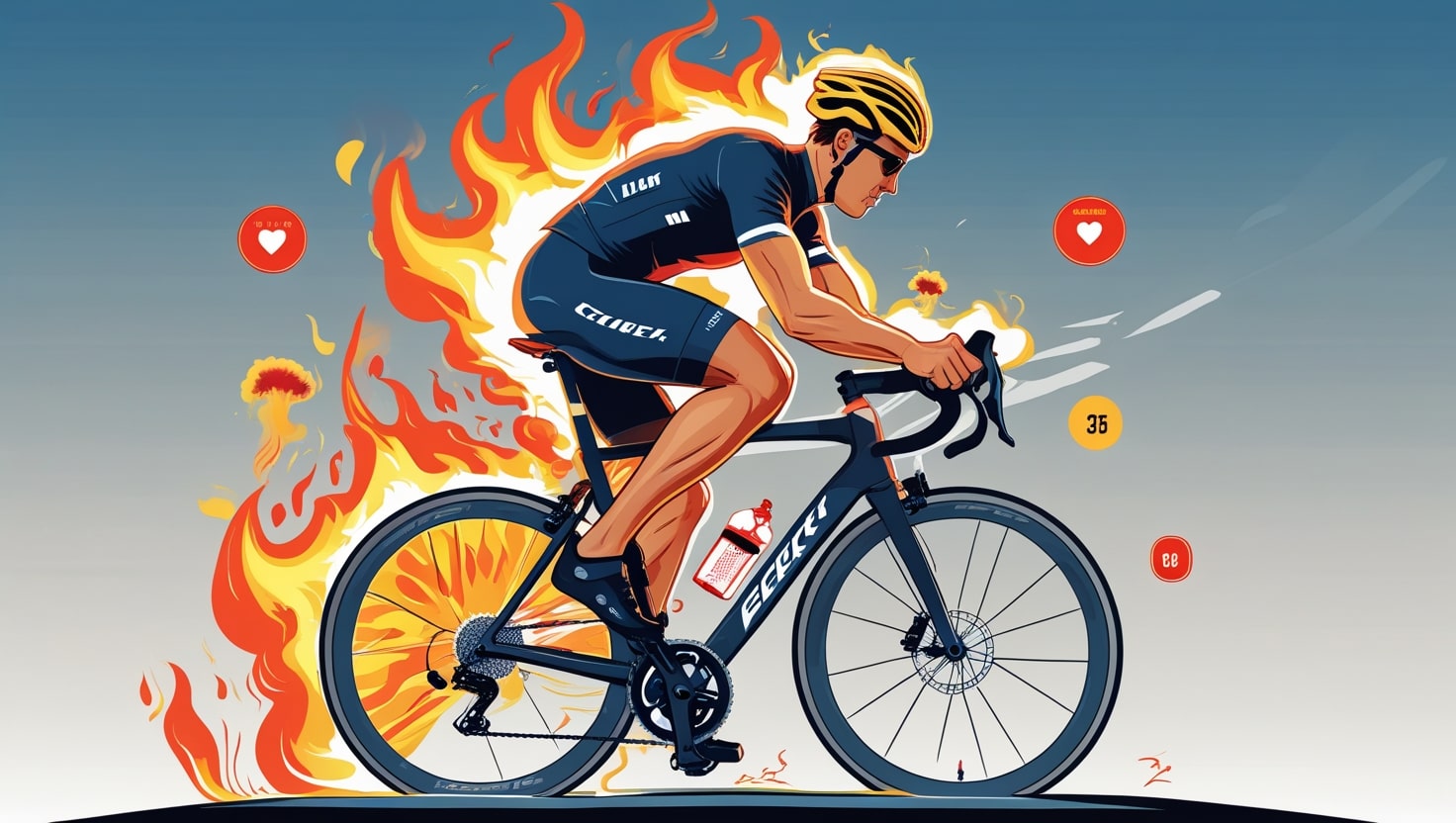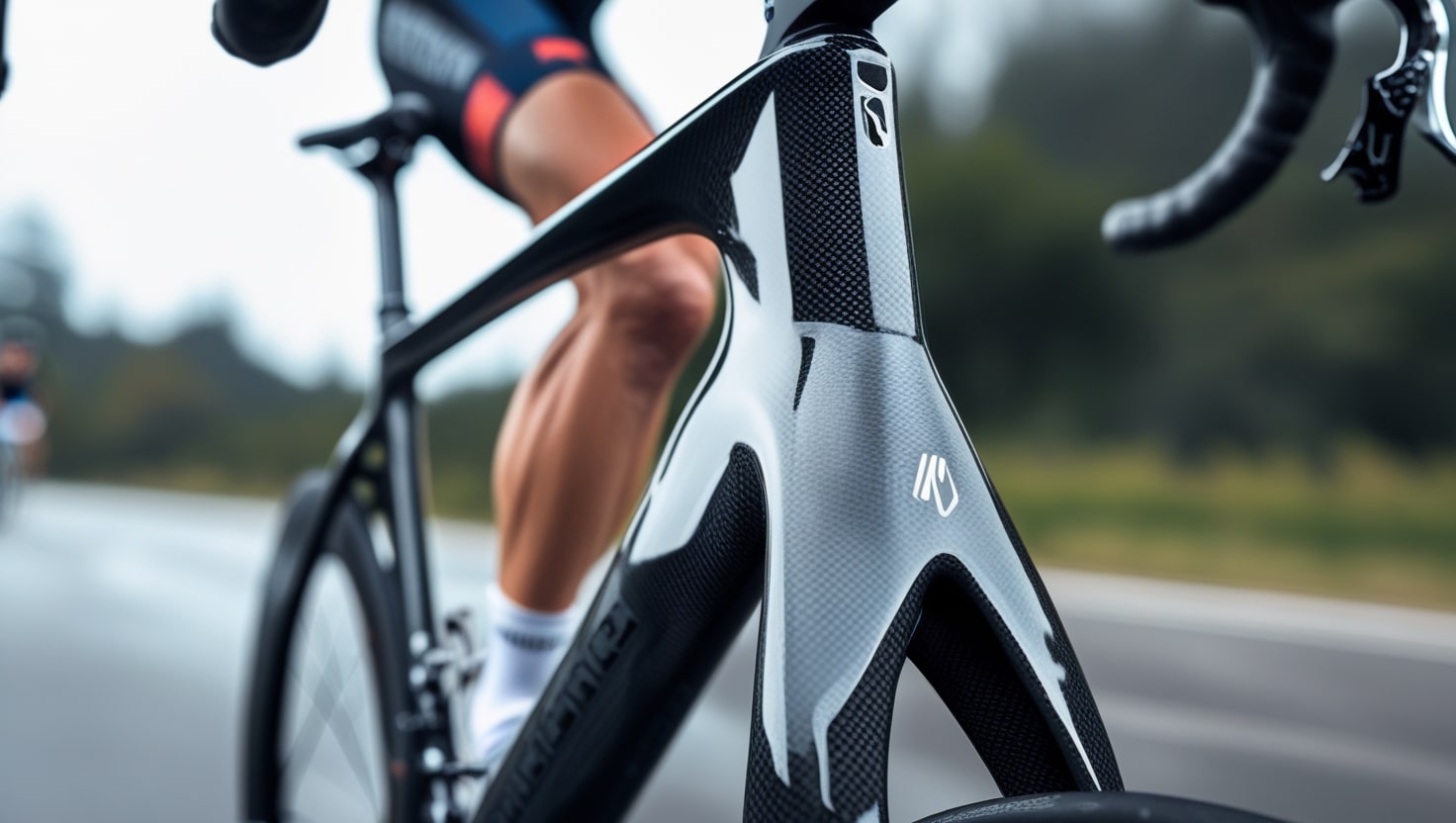When I first turned to cycling as a part of my weight-loss plan, I wasn’t sure what to expect. But as someone with a busy day, I found it surprisingly easy to slot into my routine. Over time, not only did I begin to lose weight, but I also felt fitter, lighter, and overall much healthier. That’s because cycling is a great and efficient activity—it delivers both physical and emotional benefits. Riding regularly gave me the boost I needed, especially on days when mental stress weighed heavier than the scale.
Cycling doesn’t feel like a chore, which is what makes it so effective. The fact that it’s a fun experience is quite important. Studies show we’re more likely to stick with something we like. Whether you want to become a better, faster cyclist or simply improve your health, cycling can help. If you’re tackling tough climbs, losing a few kilos can improve your power-to-weight ratio, which is often a limiting factor—no one likes getting dropped mid-ride.
But it’s also important not to compromise your performance. Losing too much can affect your maximal power, which is critical for sprinting and improving output. It’s a good idea to see a doctor before beginning if you have any medical problems. This guide will help you find how cycling helps to lose weight.
Related: Do Bikes Have Weight Limits?
The Science of Weight Loss and Cycling
When I first got into cycling, I was mainly hoping to feel more active and improve my overall fitness. But I quickly discovered how powerful it is for weight loss. Each ride turns your body into a fat-burning machine. While riding, your muscles are constantly being pushed, which triggers metabolic enhancements. Your heart rate naturally increases, and that means you’re burning more calories and using stored fat and carbohydrates for fuel.
This process doesn’t stop when you’ve dismounted. Thanks to something called excess post-exercise oxygen consumption—or EPOC—your metabolism continues to boost for hours, keeping you in a calorie-burning zone long after the workout ends.
An important component of the fat-burning equation is this post-cycling surge. I’ve personally felt the difference it makes in helping me shed those last few stubborn pounds. Consistency over time is more important than short-term remedies. The way that cycling turns into a muscle-building activity is where the true magic happens. Your leg muscles are heavily used when pedaling.
That activation not only burns calories in the moment but also contributes to your long-term progress by changing your body’s composition—more lean muscle, less fat.
All of this is why I’ve stuck with it over the years. It’s the ideal choice if you’re serious about achieving and sustaining a healthier weight.
Techniques for how cycling helps to lose weight

Increase the Intensity
If you’re looking to take your cycling and weight loss journey to the next level, one of the most effective changes you can make is increasing the intensity of your workout. When I first began, I noticed my efforts plateaued until I started including High-Intensity Interval Training (HIIT) into my weekly routine. HIIT involves alternating short bursts of all-out effort with recovery periods. For instance, I’d go from a moderate pace to a full sprint for 30 to 60 seconds, then ease into a steady rhythm for a few minutes. This structure helps burn more calories during and after the ride.
One of the reasons this works so well is due to EPOC—excess post-exercise oxygen consumption. Your body continues to burn calories for up to 24 to 36 hours post-workout, making each session more effective overall. But as you cycle more, your muscles may adapt to the demands of pedaling, making it feel easier and more comfortable for your body, which means fewer calories get burned over time unless you keep challenging yourself.
Increasing your mileage, time, or terrain on a regular basis is therefore crucial. To make the journey more intense, try riding uphill or across rough terrain. These paths are great for engaging new muscle groups and burning more fuel.
Don’t Go on an Extreme Diet

When I first started cycling to manage my weight, I made the mistake of cutting too many calories and drastically reducing my food intake. I thought less food meant quicker weight loss, but it backfired. On longer rides, I felt fatigued, my energy levels dipped fast, and I became more susceptible to crashes and near accidents.
That’s when I realized that staying under-fueled during riding only harms progress. A balanced, nutritious diet is key—it should complement your routine and provide the right fuel to keep your body working effectively on those tough miles out on the road.
Now I focus on quality choices—lean proteins, vegetables, fruits, fiber, and healthy fats—to stay nourished. It’s also important not to swing the other way: over-fueling can lead to digestive issues while pedaling and might even increase your weight. The goal is to sustain your performance, not weaken it.
Creating a Cycling Routine

When I began cycling to improve my fitness and manage my weight, I realized early on that building a solid routine was key. I had to do a few experiments at the start to see what worked best for me. What helped most was to focus on consistency and frequency—not speed or distance right away.
I aimed to cycle at least 3 to 5 times a week, which gave my body time to get accustomed to the exercise and begin to burn calories more consistently. Simple things like commuting, riding my bike to work, or planning weekend rides made it easier to increase how often I got on the saddle.
To stay on track, I used mobile apps like Strava to monitor my distance, speed, and calories burned. The data I gathered each week helped me track my progress, set realistic goals, and adjust my planning as needed. Developing a smart regimen and staying motivated made a big difference in maintaining momentum. I found it helpful to mix up my routes, take on new challenges, or ride with friends.
Lastly, I can’t stress the importance of sleeping enough. I learned that proper rest helps your body recover and repair, which is essential for progress. Additionally, it helps lower the chance of overuse injuries.
Related: Best Road Cycling Sunglasses
Stay Safe and Protected
When you’re focused on cycling for fitness or weight loss, it’s easy to overlook how essential safety and comfort are to your success. I’ve learned that wearing helmets and the right protective gear makes a huge difference—not just in keeping you safe, but in helping you ride longer and more confidently.
Choosing a bike that fits your body size, is well-fitted, and equipped with proper features is just as important. It should have good brakes, light frames, and be able to handle different riding conditions. These basics help prevent injuries from poor posture or overreaching, and they make your ride smoother overall.
If you’re serious about building a routine, a versatile fitness bicycle is a smart pick. I prefer bikes with a balanced mix of road and off-road capability—they offer more freedom and flexibility. Look for a lightweight frame, flat handlebars, and medium-width tires, especially if you’re into commuting, recreational rides, or a bit of everything.
Be Patient with the Result

Many people expect rapid or dramatic weight loss soon after starting cycling, but that’s not how it works. It’s important to follow a steady, sustainable approach. From my experience, aiming to shed around 1 kg per week is both realistic and healthy. You have to be patient with the process, especially in the first few weeks.
Avoid pushing beyond your capacity or trying to force your body to lose more than it’s ready for. Listen to your body. Your physical limits, signals, and overall condition are your guide. Being in your optimal state isn’t about going hard every ride; it’s about making each ride part of an enjoyable, balanced journey. Listening to yourself and adjusting when needed is just as essential as pedaling. Results will come—just let them follow the rhythm of your body.
Conclusion
From my own experience, cycling has been a powerful and truly enjoyable form of exercise—one that goes far beyond just achieving weight loss. It offers full-body wellness thanks to its low-impact nature and impressive calorie-burning efficiency. What makes cycling stand out is how it helps engage multiple muscle groups, making it not only effective but also more versatile and accessible than many other fitness options.
Over time, I’ve learned the importance of adding HIIT, sticking to a balanced diet, getting proper rest, and monitoring my progress to stay on track and motivated. A well-rounded plan turns every ride into something transformative, both physically and mentally. Don’t forget the basics: strap on your helmet, pump those tires, and just start pedaling.
FAQs
Is cycling good for weight loss?
Cycling is one of the best forms of aerobic exercise for supporting long-term management and weight loss. In my own training, I’ve found it just as beneficial as running or even Nordic skiing—two high-endurance activities often praised for fat burning.
How much cycling do I need to do to lose 1kg?
Many people wonder how many calories cycling actually burns, especially when trying to lose weight. While older estimates claimed you need to expend 3,500 calories to drop a pound of body weight, these numbers are now seen as inaccurate. From experience, I’ve learned that as you become leaner, it gets harder to continue shedding fat at the same rate.
Can I lose weight from cycling for one hour a day?
Yes, absolutely—you can lose weight by cycling for just one hour a day, especially if you pair it with a healthy diet.
Do I need to diet to lose weight?
There’s a common adage that you can’t out-train a bad diet, and from what I’ve seen, it holds true—unless you’re willing to ride for five hours a day, which most of us aren’t. While both exercise and eating well matter, saying one is more important than the other is too simplistic. Improving my diet began to yield greater results—or more value for my money—than training alone in my personal weight loss journey.








